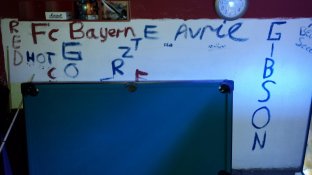Nerotheroman
Member
Good evening and happy new year to all of you  ,
,
As this is the one year anniversary of me and my analog passion,
I decide to built my first darkroom until summer
I would like to share this long term project with you guys
and hope you will have some fun, follwing me on this journey
The room:
I have a room in my basement which is my dedicated learning and aquarium
room. The room side which I want to use for the darkroom
is about 8 square meters large.
The room has a window and I have access to a water tap in
the room next door.
My goal:
Until summer this year I would like to be able to print
up to sizes of 60x80cm (Baryt only because I simoly don't like PE) from negatives in the range 6x7 up to 13x18cm.
The plan:
I have a 2mx0.6m kitchen working plate which I want
to fix on the wall. On top of the plate I like to
install a metal wet sink in the size of 1.6mx0.6m.
To darken the room I will simply turn of the aquarium lights or work in
the evening. The LEDs of the Aquarium controllers I will cover with
black insulation tape. Do you guys think, that will work?
To make the door light proof, I would like to use some thick
black fabric, which is normally used in theaters. What do you guys think
about that?
For enlarging I will use a Durst Laborator 138.
So that's the plan as for now.
It will be a long term project, so I habe lots of time, to
gather all the needed equipment
For any advice, critiques or questions I'm very thankful.
Best wishes
Mathias
 ,
, As this is the one year anniversary of me and my analog passion,
I decide to built my first darkroom until summer

I would like to share this long term project with you guys
and hope you will have some fun, follwing me on this journey

The room:
I have a room in my basement which is my dedicated learning and aquarium
room. The room side which I want to use for the darkroom
is about 8 square meters large.
The room has a window and I have access to a water tap in
the room next door.
My goal:
Until summer this year I would like to be able to print
up to sizes of 60x80cm (Baryt only because I simoly don't like PE) from negatives in the range 6x7 up to 13x18cm.
The plan:
I have a 2mx0.6m kitchen working plate which I want
to fix on the wall. On top of the plate I like to
install a metal wet sink in the size of 1.6mx0.6m.
To darken the room I will simply turn of the aquarium lights or work in
the evening. The LEDs of the Aquarium controllers I will cover with
black insulation tape. Do you guys think, that will work?
To make the door light proof, I would like to use some thick
black fabric, which is normally used in theaters. What do you guys think
about that?
For enlarging I will use a Durst Laborator 138.
So that's the plan as for now.
It will be a long term project, so I habe lots of time, to
gather all the needed equipment

For any advice, critiques or questions I'm very thankful.
Best wishes
Mathias













